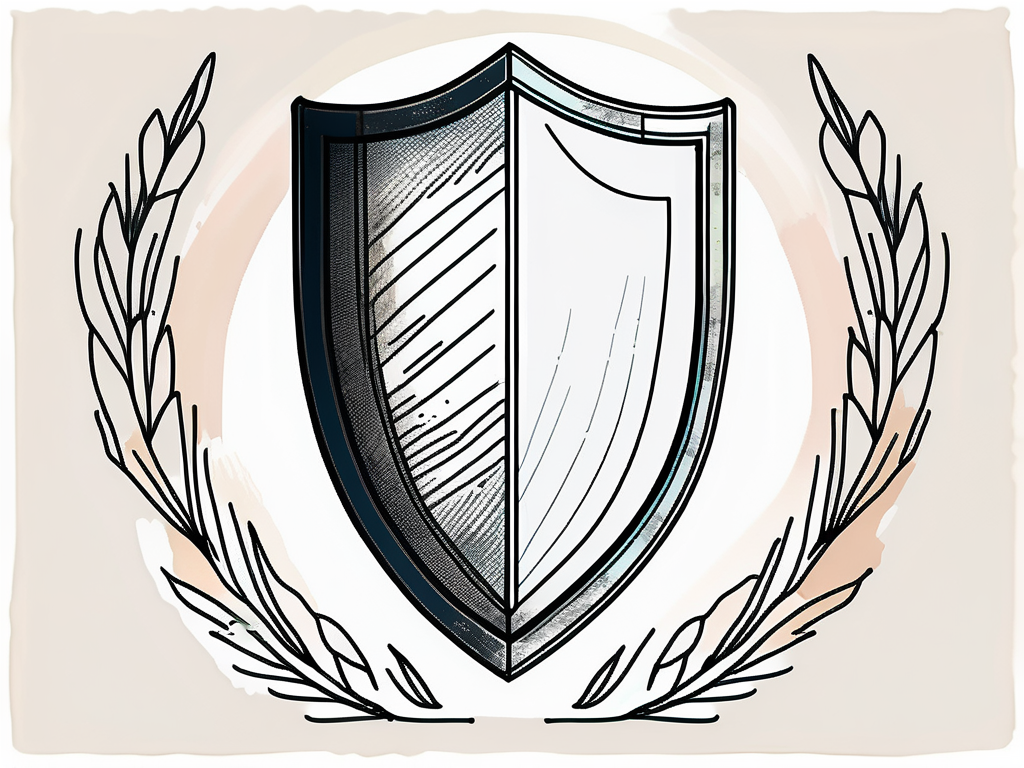In the realm of legal contracts, one agreement often overlooked but of utmost significance is the hold harmless agreement. This contractual tool serves as a critical shield, protecting parties from potential liability and disputes. Understanding the intricacies and implications of hold harmless agreements is essential in safeguarding the interests of those involved. In this article, we will delve into the definition, purpose, and various types of hold harmless agreements, while also exploring their role in the business world. Additionally, we will outline key elements to include when drafting such agreements, as well as the limitations and risks one may encounter. By the end, you will have a comprehensive understanding of the importance and application of a hold harmless agreement in safeguarding your business interests.
Understanding Hold Harmless Agreements
Definition and Purpose of a Hold Harmless Agreement
At its core, a hold harmless agreement, also known as an indemnity agreement, is a legally binding contract that effectively transfers the liability and potential legal responsibility from one party to another. This agreement offers protection to the party being held harmless, shielding them from potential legal claims, demands, or losses arising from certain acts, omissions, or events.
The primary purpose of a hold harmless agreement is to allocate risk and protect the interests of all parties involved in a particular project, venture, or activity. It ensures that each party assumes responsibility for their actions, thereby minimizing the potential for disputes and reducing the overall risk exposure.
Different Types of Hold Harmless Agreements
Hold harmless agreements come in various forms, tailored to suit specific scenarios and needs. The two most common types are general and specific hold harmless agreements. Let’s explore each in detail:
- General Hold Harmless Agreement: This type of agreement offers broad protection to one party, typically the indemnitee, against all claims, damages, expenses, and liabilities arising from any acts, negligence, or omissions of the other party, known as the indemnitor. It provides comprehensive coverage and is commonly used in business partnerships and contracts that involve high-risk activities.
- Specific Hold Harmless Agreement: Unlike the general hold harmless agreement, a specific hold harmless agreement limits the protection provided to certain specified situations or actions. It identifies specific risks or potential liabilities, outlining the indemnitor’s responsibility should any claims arise within those defined parameters.
It is crucial for parties involved to carefully consider the nature of their project or business venture before deciding which type of hold harmless agreement is most suitable. Taking this step ensures that the agreement aligns with the specific risks and liabilities involved, offering adequate protection to all parties.
The Legal Implications of a Hold Harmless Agreement
How Hold Harmless Agreements Protect Parties Involved
A well-drafted hold harmless agreement serves as an invaluable tool for protecting the interests of all parties involved in a business transaction or project. It helps prevent unnecessary legal battles, disputes, and financial losses by clarifying the allocation of responsibilities and liabilities.

By establishing the extent of liability assumed by each party, a hold harmless agreement ensures that accountability is clearly defined. This clarity minimizes the risk of misunderstandings and potential conflicts down the line, allowing all parties to focus on their respective roles and tasks without undue concern about legal repercussions.
Potential Legal Disputes and How to Avoid Them
Although a hold harmless agreement significantly reduces the likelihood of disputes, it is not foolproof. Ambiguity or inadequate wording in the agreement can still lead to disagreements or legal disputes. To avoid such occurrences, parties should exercise due diligence and take the following measures:
- Carefully Crafted Language: Employ precise, unambiguous language in the agreement to leave no room for misinterpretation. Clearly define the scope of liability to ensure both parties fully understand their obligations.
- Thorough Risk Assessment: Conduct a comprehensive evaluation of potential risks and liabilities associated with the project or activity. Addressing any foreseeable risks or contingencies in the agreement will provide added protection and minimize the potential for disputes.
- Seek Legal Advice: Consulting with legal professionals experienced in contract law can help uncover and mitigate any potential risks or ambiguities in the hold harmless agreement. Their expertise ensures maximum protection and reduces the risk of legal loopholes or oversight.
By addressing these considerations, parties can minimize the chance of legal disputes arising from a hold harmless agreement, thus maximizing the agreement’s effectiveness.
The Role of a Hold Harmless Agreement in Business
Benefits for Contractors and Subcontractors
Hold harmless agreements play a vital role in the construction industry, ensuring that contractors and subcontractors are shielded from liabilities that may arise during a project. These agreements provide a necessary layer of protection, shifting responsibility for potential accidents, injuries, or property damage from subcontractors to the party requesting their services.
For contractors, this agreement serves as a safeguard, minimizing the risk of costly legal battles initiated by subcontractors seeking compensation. Conversely, subcontractors are protected from bearing the entire burden of liability, allowing them to focus on their specialized tasks and deliver quality work without undue concern. This mutual protection fosters a balanced and efficient working relationship between the involved parties.
Protecting Your Business Interests
Irrespective of the industry or nature of your business, incorporating hold harmless agreements into your contracts can provide significant protection for your business interests. Whether engaging in joint ventures, partnerships, or leasing agreements, the inclusion of these agreements safeguards against potential legal and financial pitfalls.
By transferring the burden of liability to the appropriate parties and clearly defining the obligations and consequences, businesses can mitigate risks, protect assets, and ensure smooth operations. The implementation of hold harmless agreements becomes especially crucial when dealing with high-risk activities, such as manufacturing, event planning, or hazardous material handling.
Drafting a Hold Harmless Agreement
Key Elements to Include in Your Agreement
When drafting a hold harmless agreement, attention to detail is paramount. To ensure the agreement effectively extends the desired protection and liability transfer, the following elements should be included:

- Identification of Parties: Clearly state the names and contact information of all parties involved, ensuring there is no ambiguity regarding the identities of the indemnitee and indemnitor.
- Scope of Liability: Define the specific activities, situations, or circumstances for which the indemnitor assumes responsibility. Be as explicit as possible, leaving no room for ambiguity or misinterpretation.
- Insurance Coverage: Specify any insurance coverage requirements or stipulations, ensuring all parties maintain adequate protection throughout the duration of the agreement.
- Waiver and Release: Include a clause indicating that the indemnitee releases the indemnitor from any future claims or damages arising from the specified activities, situations, or circumstances.
- Indemnification Conditions: Clearly outline the conditions under which indemnification will take effect, including the notification process, timeframes, and methods of communication.
- Severability: Include a provision stating that if any portion of the agreement is found to be unenforceable, the remaining provisions will continue to be valid and enforceable.
By incorporating these essential elements into the hold harmless agreement, parties can ensure that their respective rights and protections are legally binding and enforceable, minimizing the potential for disputes or legal challenges.
Seeking Legal Advice for Agreement Drafting
While hold harmless agreements can be drafted independently, it is advisable to seek legal counsel. Attorneys specializing in contract law possess the expertise and experience necessary to tailor agreements to the specific needs of your business and industry.
Legal professionals can provide invaluable guidance, ensuring that the agreement aligns with local laws and regulations while safeguarding your interests. Additionally, their insights can help identify potential risks and liability gaps that parties may overlook. Investing in professional legal advice can save significant time, effort, and potential legal complications down the line.
The Limitations and Risks of a Hold Harmless Agreement
Understanding the Limitations of Protection
Despite their effectiveness, hold harmless agreements have certain limitations that parties should be aware of. It is crucial to understand that these agreements do not provide blanket immunity to all claims or absolve parties from their actions entirely.
Depending on the jurisdiction and the nature of the claim, courts may still analyze the agreement to ensure it is fair, reasonable, and not contrary to public policy. Additionally, the agreement’s language and wording must be precise and unambiguous to avoid judicial scrutiny.
Furthermore, hold harmless agreements may be deemed unenforceable if found to be in violation of certain laws or if they attempt to shield parties from their own gross negligence or willful misconduct. These limitations reinforce the importance of thorough drafting and legal advice throughout the process.
Identifying Potential Risks and How to Mitigate Them
In order to maximize the effectiveness of a hold harmless agreement, parties must conduct a thorough risk assessment to identify potential areas of vulnerability. By understanding the specific risks associated with their project or venture, parties can take mitigating measures, such as:
- Insurance: Taking out appropriate insurance coverage can offer an additional layer of protection against certain risks that may remain unaffected by the hold harmless agreement.
- Safety Measures: Implementing stringent safety protocols and measures can minimize the likelihood of accidents or incidents, reducing the need for reliance on the hold harmless agreement.
- Documenting Compliance: Maintaining thorough records documenting compliance with safety, legal, and regulatory requirements can strengthen the parties’ position in the event of a claim.
These proactive steps, combined with a meticulously crafted hold harmless agreement, ensure that parties are well-prepared to face potential risks and can protect their interests effectively.
In Conclusion
A hold harmless agreement should never be overlooked in any business transaction or project. These agreements provide an essential layer of protection, ensuring that parties involved are shielded from potential liabilities and disputes. By understanding the various types, legal implications, and limitations of hold harmless agreements, individuals and businesses can effectively allocate risks and protect their interests.

When drafting a hold harmless agreement, careful attention to detail and adherence to best practices is crucial. Seeking legal advice further enhances the agreement’s effectiveness, safeguarding all parties involved against unforeseen legal challenges.
Ultimately, the inclusion of a well-drafted hold harmless agreement in your contracts offers peace of mind, fostering a secure and thriving business environment. By prioritizing the protection of your business interests, you ensure a solid foundation for growth, success, and lasting partnerships.



